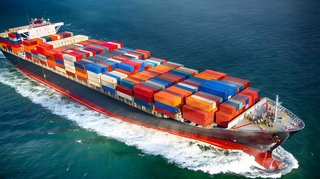Navigating the Waters of Shipping From China

In the present global marketplace, China stands as a pivotal player in manufacturing and trade. Whether you're a seasoned entrepreneur or even a budding e-commerce store owner, understanding how to navigate the complexities of Best China Freight Forwarder Agent can significantly impact your business's success. From logistics to customs, here’s an extensive guide to assist you to sail smoothly from the process.

Comprehending the Basics
**1. ** Logistics and Transportation:
Shipping Methods: You can find primarily three methods to ship goods from China: sea freight, air freight, and courier services (like DHL, UPS, FedEx). Sea freight is economical for giant shipments, while air freight is quicker but more costly.
Shipping Agents: Having a reliable shipping agent or freight forwarder can streamline the method. They handle documentation, customs clearance, and logistics, ensuring your goods arrive punctually and intact.
**2. ** Customs and Regulations:
Import Regulations: Each country has specific import regulations and tariffs. Understanding these regulations is vital to avoid delays or additional costs.
Customs Documentation: Prepare necessary documents for example commercial invoices, packing lists, and certificates of origin. Accuracy is essential to smooth customs clearance.
Deciding on the best Partner
**1. ** Supplier Vetting:
Due Diligence: Conduct thorough research on potential suppliers. Verify their credentials, quality standards, and track record to mitigate risks.
Communication: Clear communication is vital to avoid misunderstandings regarding product specifications, packaging, and delivery schedules.
**2. ** Shipping Partners:
Freight Forwarders: Choose a freight forwarder with expertise in shipping from China for your destination. They can offer competitive rates and take care of logistics complexities.
Insurance: Consider purchasing cargo insurance to protect against loss or damage during transit.
Planning and Execution
**1. ** Lead Times and Inventory Management:
Lead Times: Element in production lead times and shipping durations when planning inventory levels and product launches.
Buffer Time: Allow for buffer time for you to accommodate potential delays in shipping or customs clearance.
**2. ** Cost Considerations:
Total Cost Calculation: Calculate every cost involved, including product costs, shipping fees, customs duties, and taxes. Negotiate with suppliers and freight forwarders to optimize costs.
Currency Fluctuations: Be mindful of currency exchange rates as they can impact your general expenses.
Coping with Challenges
**1. ** Quality Control:
Inspections: Conduct pre-shipment inspections to make sure product quality meets your standards. Address any problems with the supplier before shipping.
**2. ** Legal and Compliance Issues:
Ip: Protect your ip rights through patents, trademarks, and confidentiality agreements.
Compliance: Stay updated on international trade legal guidelines to avoid legal pitfalls.
Conclusion
Shipping from China offers immense opportunities for businesses worldwide, nevertheless it requires meticulous planning, attention to detail, and strategic partnerships. By comprehending the logistics, navigating customs regulations, and selecting reliable partners, you can effectively manage risks and optimize the supply chain process. Embrace your way with preparedness and foresight, along with your venture into global trade could be both profitable and rewarding.
